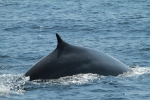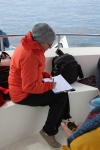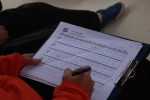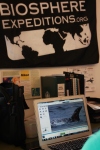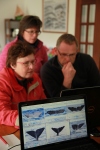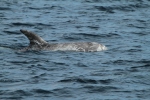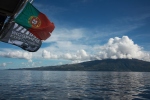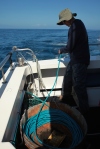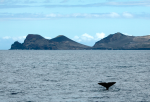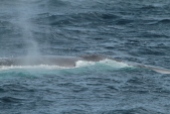Longest-known sperm whale match recorded during the Biosphere Expeditions Azores project. Male sperm whale returns to the “scene of the crime”
Biosphere Expeditions, now in its 13th year of collaboration with marine biologist Lisa Steiner, observed a sperm whale 29 years after she was first seen swimming in the Azores. Nº19, as she is known, was first observed as an adult in 1987. This is the longest recorded re-sighting of a sperm whale anywhere on the planet. Nº19 was observed ten times (three times during an expedition) over at least half of her life, since sperm whales live for 60-70 years.
The expedition also had an unbelievable sighting, a real “Ripley’s Believe It or Not” moment. A male sperm whale seen on 20 April 2016 was re-sighted in almost exactly the same position and at the same time as it was on 20 April 2009, seven years to the day and hour previously.
Also sighted during the 2016 expedition were a couple of blue whales that had been seen previously, one in 2006 & 2013 and the other from 2010.
This long-term research is showing that these ocean giants utilise the same migration corridor year after year. Three different humpback whales recorded during the expedition have also been observed on the breeding grounds in the Cape Verde Islands. The Azores is a “snack stop” on their way back to the Norwegian or Icelandic feeding grounds.
All of these data are collected using citizen scientists that come from all walks of life who may have never seen a whale before. Without them, this valuable information would not be collected.
Lisa Steiner says that “Photo-ID projects take time to bear fruit and it’s great that Biosphere Expeditions is in for the long haul. We are starting to generate some amazing results from our efforts. Inter-annual matches of these migrating giants shows that they tend to migrate along the same corridors year after year. Matching some of these animals to breeding grounds or feeding grounds gives us clues as to how whales are split into separate stocks. And the icing on the cake, for me, is identifying a sperm whale 10 times over the last 29 years; that is absolutely incredible.”
Photo archive of the 2016 expedition:
Update from our volunteer vacation / conservation holiday protecting whales, dolphins and turtles around the Azores archipelago





